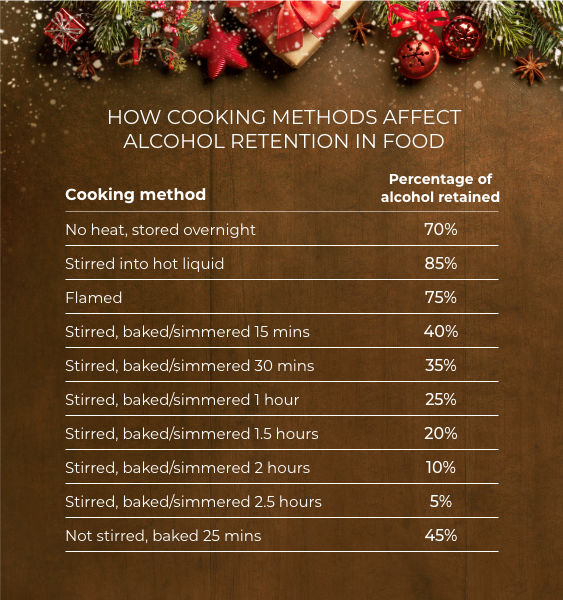Christmas day is known for being a boozy affair but for many the day is spent driving between family celebrations trying to see everyone.
But how many designated drivers tally up the alcohol in their food to stay on the legal side of the drink-drive limit?
Through careful research we’ve identified that it’s not just a glass of vino with dinner you have to be careful of when getting behind the wheel, but the alcohol content in your Christmas dinner too. From succulent turkey cooked in a red wine and nutmeg seasoning to roast parsnips in a honey and sherry glaze topped off by an indulgent slice of Christmas pudding smothered in brandy butter – you could be at risk.
We’ve plated up five dinner combinations to see which foods could be pushing you over the limit this Christmas…

In England and Wales, the alcohol limit for drivers is 80 milligrammes of alcohol per 100 millilitres of blood, 35 microgrammes per 100 millilitres of breath or 107 milligrammes per 100 millilitres of urine. In most other European countries – including Scotland - the limit is less, usually 50 milligrammes per 100 millilitres of blood.
For women this equates to around three units of alcohol or one large (250ml) glass of 13% wine and for men the limit is four units – equivalent to around one and half pints of 4% beer.
In a survey of 2,000 Brits, almost half (49%) don’t take alcohol consumed through food into account when thinking about the drink-drive limit and of those 30% feel uninformed about alcohol retention in cooking and believe all alcohol used for ingredients is burned off during the cooking process, but this is just not true.
Each cooking method – from boiling to roasting – has different alcohol retention rates:

Dr. Ruth Fairchild from Cardiff School of Sport & Health Sciences said, “There is no fool-proof way of consuming alcohol and staying under the drink drive limit. The amount of alcohol you would need to eat or drink to be considered over the limit varies from person-to-person and depends on your weight, age, gender and metabolism, as well as the strength and quantity of the alcohol and the type and amount of food eaten around the time of the alcohol consumption.
“The effect of food on alcohol absorption is often overlooked but the fuller you get the slower your body can eliminate alcohol from your system. This is especially important to remember when consuming a meal rich in protein and carbohydrates like your Christmas dinner, as these foods are slower to digest”.
“Another thing people don’t often consider is the accumulation of alcohol over a number of days. If you drink alcohol on Christmas Eve, followed by a Christmas dinner laden with alcohol infused foods and continue drinking on Boxing Day, your body is unable to metabolise the alcohol quickly enough before the next session begins – hence why we call it ‘topping up’.”
Here are Ruth’s top tips for staying safe on the roads this Christmas (without ruining your festive fun) …
- Simply avoid - or moderate - foods that you know contain alcohol. If you are unable to do this, ensure you do not have an accompanying alcoholic drink with your meal.
- Using alcohol flavoured essences within recipes are ideal for retaining flavour while reducing alcohol consumption and can be bought for a fraction of the price of real spirits and liquor.
- Make sure you’re clued up on alcoholic ingredients. It’s common when heating up Christmas pudding the next day to add an extra splash of Brandy, to guarantee the same rich taste on day two, however, that extra splash could be the tipping point on the legal limit if you’ve consumed other boozy foods or drinks that day.
- Share out the designated driver duties so everyone has a chance to have a drink, should they want to.
If you want to know more about what’s in your drinks, Drink Aware has an easy unit and calorie calculator to help you work out the number of alcohol units you’re consuming.
If you’re spending a large chunk of your Christmas driving around, trying to keep the family happy, a gift to self is a great way to soften the blow. Explore our new and used car ranges today.
